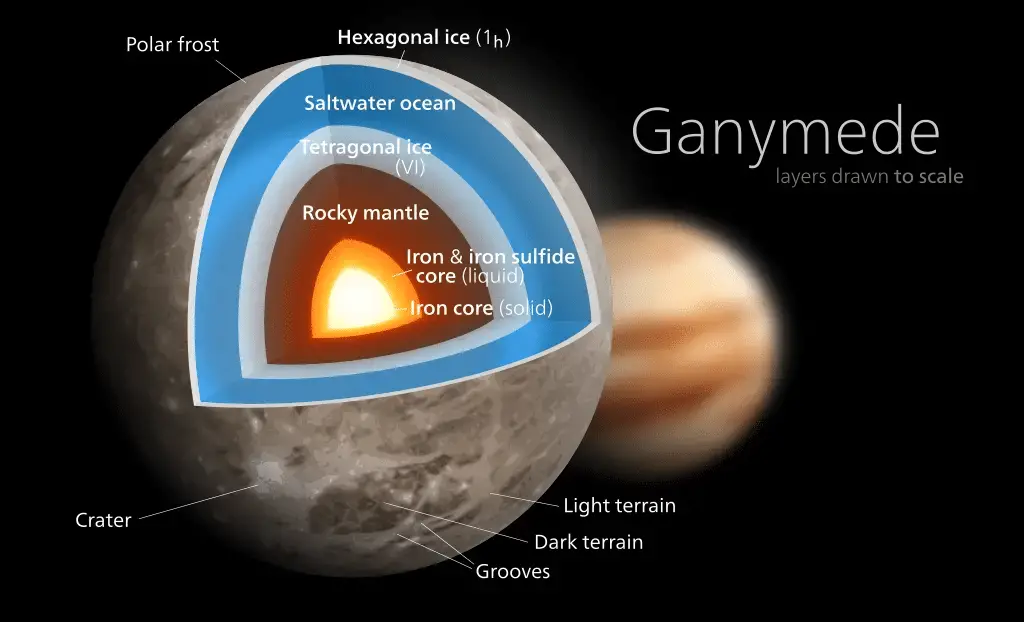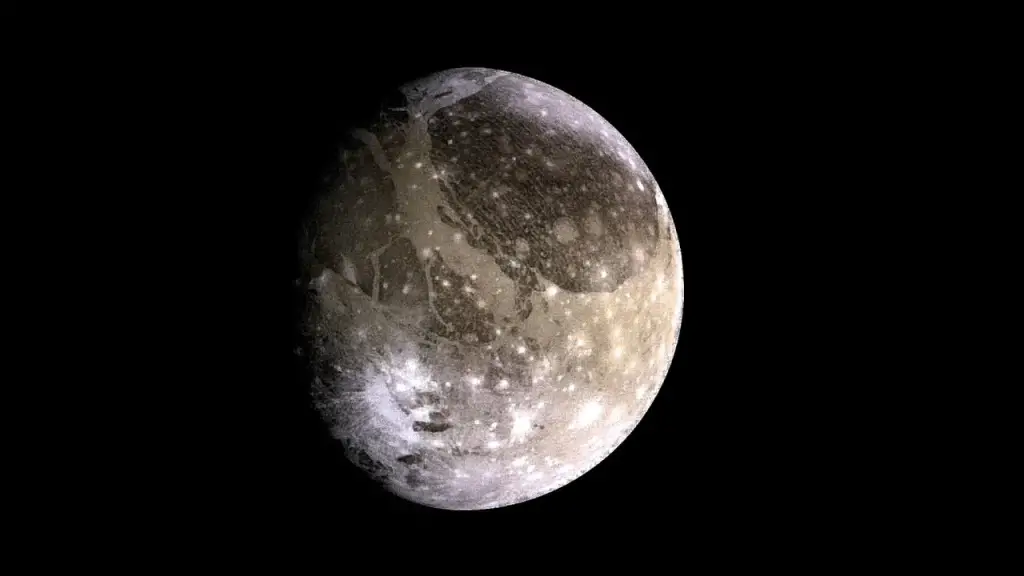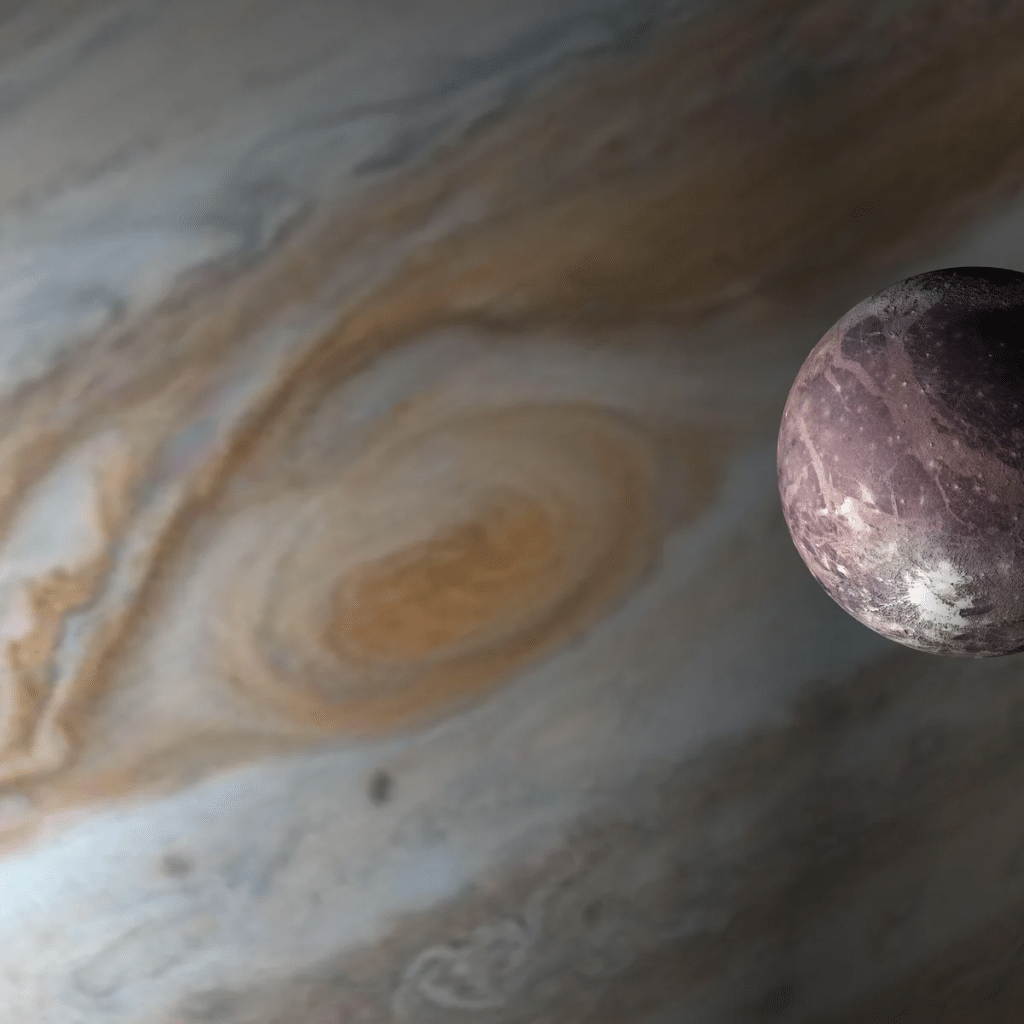In the vast and mysterious universe, cosmic impacts have always played a crucial role in the formation and evolution of celestial bodies, but one of the most significant events of this kind took place in our solar system, leaving an indelible imprint on GanymedeJupiter’s largest moon.
This colossal impact has forever transformed the surface and internal structure of this moonmaking it an object of great interest to scientists and astronomers around the world.
Ganymede, with a diameter of about 5,268 kilometersit is not only Jupiter’s largest moonbut also the largest of the entire solar systemeven surpassing the planet Mercury in size. Its composition is a fascinating mix of ice and rockwith an icy crust that hides an underground ocean, and a metallic core that generates its own magnetic field, unique among the moons of the solar system.
The impact that changed Ganymede forever was caused by an asteroid or comet huge sizewhich hit the moon with a devastating forcea catastrophic event that created a series of unique geological structures, including giant craters, impact basins, and fractures that extend for thousands of kilometers. The consequences of this impact are still visible today and offer scientists a unique window into the history and evolution of Ganymede.
Image and data analysis collected by space missions, such as NASA’s Galileo probe, has allowed us to reconstruct the sequence of events that followed the impact, and computer simulations have shown how the energy released by the impact heated and deformed the frozen crust of this moon, creating a complex mosaic of terrain and structures. This warming may also have affected the subsurface ocean, potentially altering its composition and dynamics.

In addition to the above, the impact has had significant implications for understanding the formation and evolution of icy moons in the solar system. By studying Ganymede, scientists can gain valuable clues to similar processes which may have influenced other moons and planets, including the Earth. This makes Ganymede not only a fascinating object of study, but also a key to unlocking the mysteries of our solar system and beyond.
The Impact on Ganymede and the Consequences
The impact that transformed Ganymede was one of the most energetic and devastating events in the solar systemthis event released an enormous amount of energy, comparable to millions of atomic bombswhich caused a series of dramatic changes on the surface and interior of the moon.
One of the most visible effects of the impact is the formation of giant craters, some of which have a diameter of hundreds of kilometersand are the result of kinetic energy released by the impacting object. Ganymede’s surface is dotted with these craters, which tell the story of a violent and tumultuous past, with each crater being a window to the pastallowing scientists to study the composition and structure of Ganymede’s icy crust.

In addition to craters, the impact created large impact basins, which are circular depressions that are larger and deeper than craters. These basins are often surrounded by concentric rings of mountains and hills, formed by material ejected during the impact, and are among the most impressive geological structures in the solar systemproviding valuable clues to the dynamics of high-energy impacts.
The energy from the impact also caused fractures and faults in Ganymede’s icy crust, fractures that extend for thousands of kilometers and are visible as dark lines on the moon’s surface. The faults are the result of mechanical stress caused by the impact, which deformed the crust and created these linear structures, and both are important for understanding the tectonic history of Ganymede and its geological evolution.
One of the most intriguing aspects of the impact is its potential effect on the underground ocean of the moon, with scientists believing that the energy released by the impact may have warmed the oceanaltering its composition and dynamics, a warming that could have influenced the circulation of water and the formation of icy structures within the ocean.
Studying these effects may provide valuable clues about the possibility of life in Ganymede’s subsurface ocean and how cosmic impacts might affect the habitability of icy moons.

The impact on Ganymede also has significant implications for the planetary scienceBy studying the aftermath of this event, scientists can gain a better understanding of the processes that shape the surfaces and interiors of celestial bodies in the solar system.
This may help answer fundamental questions about the formation and evolution of moons and planets, not only in our own solar system, but also in extrasolar systems.
If you are attracted by science or technology, keep following us, so you don’t miss the latest news and updates from around the world!
#Ganymede #peculiarities #due #asteroid #hit